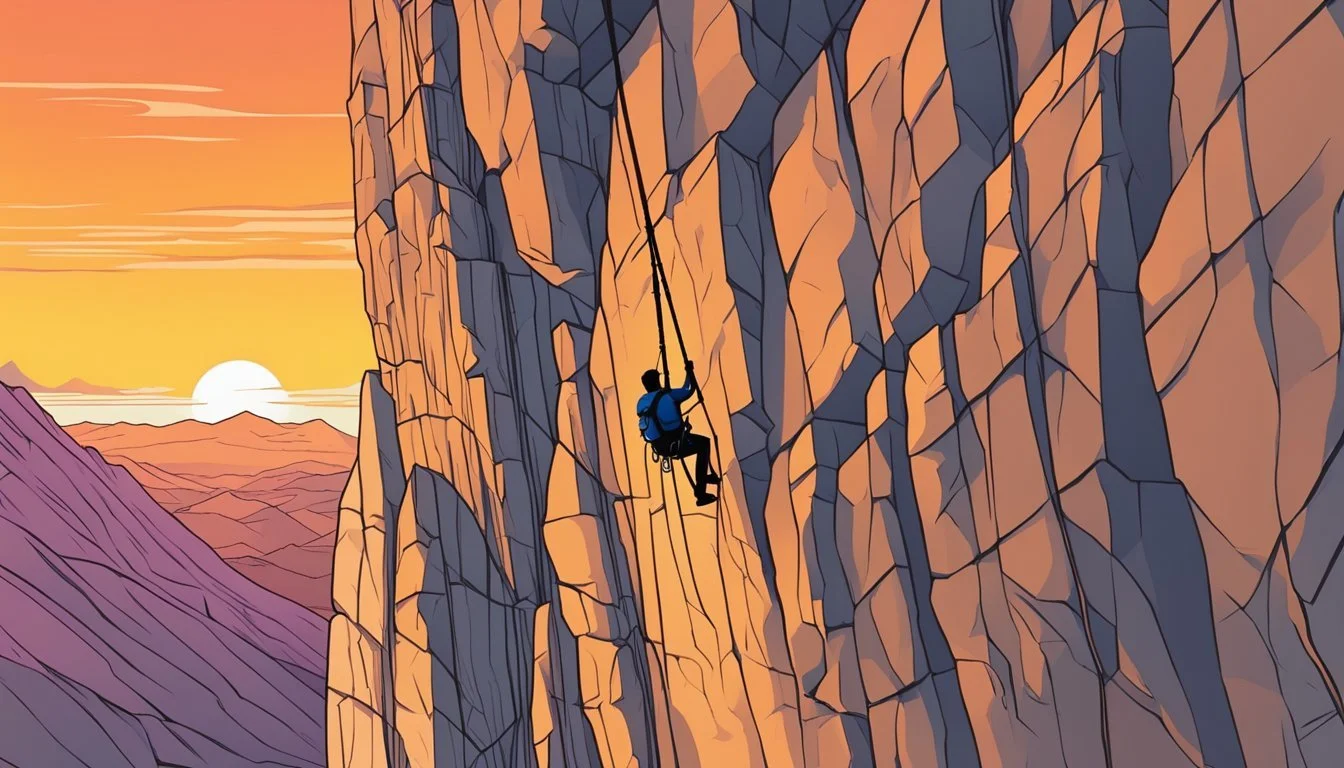6 Documentaries About the Most Incredible Feats of Human Endurance
Pushing the Limits of Physical and Mental Strength
Documentaries about extraordinary feats of human endurance captivate audiences by showcasing the remarkable resilience of the human spirit. These films transport viewers to harsh environments and extreme challenges, where individuals push their physical and mental limits to achieve the seemingly impossible.
Endurance documentaries inspire viewers by demonstrating that ordinary people can accomplish extraordinary goals through dedication and perseverance. From ultramarathons across unforgiving terrains to polar expeditions in frigid conditions, these films highlight the incredible capabilities of the human body and mind when faced with adversity. They offer a glimpse into the motivations, struggles, and triumphs of those who dare to test the boundaries of human performance.
1) The Barkley Marathons
The Barkley Marathons is an ultra-endurance event that pushes runners to their absolute limits. This grueling race takes place in the unforgiving terrain of Frozen Head State Park, Tennessee.
Participants must complete five loops of approximately 20 miles each within a 60-hour time limit. The course is unmarked, and runners must navigate using a map and compass while collecting pages from books hidden along the route.
"The Race That Eats Its Young" (2014) is a groundbreaking documentary that brought widespread attention to the Barkley Marathons. It captures the essence of this unique event, showcasing the physical and mental challenges faced by participants.
"The Barkley Marathons: Going Solo" (2023) offers a fresh perspective on the race. This film explores the experiences of individual runners as they tackle the daunting course, highlighting their determination and resilience.
Both documentaries provide viewers with an intimate look at one of the most demanding endurance events in the world. They showcase the raw human spirit and the incredible feats of endurance that unfold during the Barkley Marathons.
The Race That Eats Its Young - IMDb
2) Free Solo
Free Solo documents Alex Honnold's groundbreaking climb of El Capitan in Yosemite National Park without ropes or safety gear. The film follows Honnold's meticulous preparation and eventual ascent of the 3,000-foot vertical rock face.
Directors Jimmy Chin and Elizabeth Chai Vasarhelyi capture the intense physical and mental challenges Honnold faces. The cinematography showcases both the beauty of Yosemite and the heart-stopping nature of free soloing.
Free Solo provides insight into Honnold's mindset and motivations for taking on such extreme risk. It explores themes of passion, fear management, and pushing human limits.
The documentary won numerous awards, including the Academy Award for Best Documentary Feature in 2019. It received critical acclaim for its thrilling footage and compelling portrayal of Honnold's historic achievement.
Free Solo stands out for capturing one of the most daring athletic feats ever attempted. It offers viewers a visceral look at the pinnacle of rock climbing and human endurance.
https://en.wikipedia.org/wiki/Free_Solo_(film)
3) 14 Peaks: Nothing is Impossible
"14 Peaks: Nothing is Impossible" chronicles the extraordinary journey of Nepalese mountaineer Nirmal "Nims" Purja. The documentary follows his ambitious quest to climb all 14 of the world's 8,000-meter peaks in just seven months.
Prior to Purja's attempt, the fastest ascent of these mountains took over seven years. Purja aimed to shatter this record, facing extreme weather conditions, oxygen deprivation, and physical exhaustion.
The film showcases Purja's unwavering determination and the support of his dedicated team. It highlights the challenges they encountered, including navigating dangerous terrain and overcoming unexpected obstacles.
Directed by Torquil Jones, the documentary offers breathtaking views of some of the world's highest peaks. It also delves into Purja's background as a Gurkha and member of the UK Special Forces.
"14 Peaks" not only captures the physical demands of high-altitude climbing but also explores the mental fortitude required for such an endeavor. It presents a compelling story of human perseverance and the power of setting seemingly impossible goals.
Wikipedia: 14 Peaks: Nothing Is Impossible
4) The Dawn Wall
The Dawn Wall documents an extraordinary feat of human endurance and determination. It follows rock climbers Tommy Caldwell and Kevin Jorgeson as they attempt to free climb a 3,000-foot vertical rock face on El Capitan in Yosemite National Park.
This previously unclimbed route is considered one of the most difficult in the world. The film captures the climbers' grueling 19-day journey as they navigate the sheer granite wall, battling extreme weather conditions and physical exhaustion.
Caldwell and Jorgeson face numerous setbacks and injuries during their ascent. They persevere through countless falls and challenging sections that push the limits of their strength and skill.
The Dawn Wall showcases not only the climbers' physical prowess but also their mental fortitude. It highlights the years of planning, training, and preparation that went into this monumental climb.
Through stunning cinematography, the documentary immerses viewers in the climbers' experience high above Yosemite Valley. It offers a unique perspective on the risks and rewards of pursuing seemingly impossible goals.
[https://en.wikipedia.org/wiki/The_Dawn_Wall_(film)]
5) Touching the Void
Touching the Void recounts the harrowing true story of Joe Simpson and Simon Yates' 1985 attempt to climb Siula Grande in the Peruvian Andes. The documentary, directed by Kevin Macdonald, brings their near-fatal expedition to life through reenactments and interviews.
After successfully reaching the summit, disaster strikes during the descent when Simpson falls and breaks his leg. Yates attempts to lower his injured partner down the mountain, but is eventually forced to cut the rope to save his own life.
Against all odds, Simpson survives the fall into a crevasse and manages to crawl back to base camp over several days. The film explores themes of survival, decision-making under extreme circumstances, and the human will to live.
Touching the Void offers a gripping account of one of the most remarkable survival stories in mountaineering history. It provides insight into the physical and psychological challenges faced by climbers in life-threatening situations.
https://en.wikipedia.org/wiki/Touching_the_Void_(film)
6) Valley Uprising
Valley Uprising chronicles the history of rock climbing in Yosemite National Park. The documentary spans from the 1950s to the present day, showcasing the evolution of climbing techniques and culture.
The film highlights the daring feats of pioneering climbers who pushed the boundaries of what was possible on Yosemite's towering granite walls. It captures the spirit of rebellion and adventure that defined the climbing community.
Valley Uprising explores the conflicts between climbers and park authorities as the sport gained popularity. The documentary also delves into the counterculture that flourished in Yosemite's Camp 4 during the 1960s and 70s.
The film features interviews with legendary climbers and archival footage of groundbreaking ascents. It illustrates how climbers continuously challenged themselves to achieve ever more difficult routes on El Capitan and Half Dome.
Valley Uprising showcases the progression of climbing from traditional methods to free soloing, highlighting the incredible risks taken by modern climbers.
https://www.imdb.com/title/tt3784160/
Understanding Human Endurance
Human endurance involves pushing physical and mental limits to achieve extraordinary feats. It encompasses the body's ability to sustain prolonged effort and the mind's capacity to overcome challenges.
Physiological Factors
The human body adapts remarkably to endurance demands. Cardiovascular fitness improves, allowing the heart to pump more blood with each beat. Muscle fibers become more efficient at using oxygen, enhancing stamina.
Hormones like cortisol and adrenaline play crucial roles in mobilizing energy reserves. The body learns to tap into fat stores more effectively, sparing glycogen for extended performance.
Thermoregulation becomes more efficient, helping athletes maintain optimal body temperature in extreme conditions. Bone density and joint strength increase to withstand repetitive stress.
Psychological Aspects
Mental toughness is paramount in endurance feats. Athletes develop strategies to manage pain, fatigue, and self-doubt. Positive self-talk and visualization techniques help maintain focus and motivation.
Goal-setting and breaking tasks into manageable segments aid in tackling seemingly insurmountable challenges. Resilience grows as individuals learn to adapt to unexpected setbacks.
Flow states, where athletes become fully immersed in their activity, can enhance performance and reduce perceived effort. Social support and a sense of purpose often drive individuals to push beyond perceived limits.
The Impact of Extreme Environments
Extreme environments push human bodies and minds to their limits. These harsh conditions test adaptability and resilience in ways that reveal the remarkable capacity of humans to endure.
Survival in Cold Climates
Cold climates present unique challenges to human survival. The body must work harder to maintain core temperature, burning more calories and requiring increased food intake. Frostbite and hypothermia are constant threats.
Proper gear is essential. Layered clothing, insulated boots, and protective eyewear help retain body heat and shield against icy winds. Shelter becomes critical, with snow caves and igloos providing insulation from the elements.
Mental toughness plays a key role. Isolation and long periods of darkness in polar regions can lead to depression and disorientation. Maintaining routines and social connections helps combat these psychological effects.
Adapting to High Altitudes
High altitudes expose humans to lower oxygen levels, testing the body's ability to function with less air. Above 8,000 feet, altitude sickness can cause headaches, nausea, and fatigue.
Acclimatization is crucial. The body gradually produces more red blood cells to carry oxygen more efficiently. This process typically takes several days to weeks.
Hydration becomes more important at altitude. The dry air and increased respiration rate lead to faster water loss. Drinking plenty of fluids helps prevent dehydration and reduces altitude sickness symptoms.
Physical exertion requires careful pacing. Even fit individuals may find themselves quickly out of breath. Slow, steady movement and frequent rest breaks allow the body to adjust to the thinner air.



